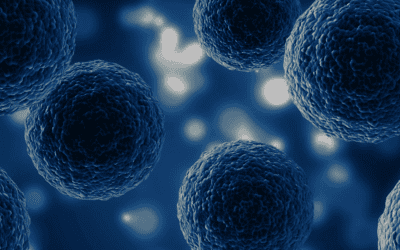
As we age, testosterone levels naturally decrease, leading to a growing demand for testosterone treatment due to our longer lifespans. One common treatment for low testosterone, known as hypogonadism, is testosterone replacement therapy (TRT). TRT involves the use of injections, pellets, patches, or gels containing synthetic testosterone to address the hormonal imbalance. While TRT has been shown to effectively treat hypogonadism and enhance quality of life, it also carries certain risks, particularly for individuals considering future fertility.
Learn more about the mechanisms of TRT, its advantages and disadvantages, and alternative options worth exploring.
Here are the key points to remember:
-
- TRT addresses low testosterone levels through synthetic testosterone delivered via injections, pellets, patches, or gels.
-
- Benefits of TRT include increased libido, enhanced erections, muscle mass gain, weight loss, and overall improvement in quality of life.
-
- Drawbacks of TRT encompass reduced sperm count and quality, testicular shrinkage, heightened risk of blood clots, and potential breast enlargement.
-
- Combining enclomiphene medication with healthy lifestyle choices can help restore testosterone levels without the side effects associated with TRT.
Signs and Symptoms of Low Testosterone:
The American Urological Association sets a threshold of at least 300 ng/dL for “normal” testosterone levels. However, a clinical diagnosis of low testosterone requires both low hormone levels and accompanying signs and symptoms.
Common indicators of low testosterone include:
-
- Low libido
-
- Erectile dysfunction
-
- Small testicular size
-
- Decreased muscle mass
-
- Increased body fat
-
- Hair loss
-
- Sleep disturbances
-
- Poor focus
-
- Low sperm count
Causes of Low Testosterone:
Testosterone levels typically decrease by about 1.6% per year, with nearly 39% of men aged 45 and above experiencing low testosterone levels or hypogonadism.
Causes of hypogonadism can be categorized into two types:
-
- Primary hypogonadism, stemming from testicular issues such as injury or anatomical abnormalities
-
- Secondary hypogonadism, triggered by problems in the hypothalamus or pituitary gland, like brain injury or genetic conditions
Aside from aging, other factors contributing to hypogonadism include:
-
- Testicular tumors
-
- Stress
-
- Obesity
-
- Genetic conditions like Kallmann syndrome or Klinefelter syndrome
-
- Testicular abnormalities or varicocele
-
- Testicular inflammation or orchitis
-
- Various illnesses such as tuberculosis, kidney failure, liver failure, or HIV/AIDS
-
- Cancer treatments and certain medications like chemotherapy
-
- Steroid use
Understanding TRT:
Testosterone replacement therapy (TRT) is a hormone treatment designed to alleviate symptoms associated with low testosterone levels, such as erectile dysfunction and fatigue. By suppressing the body’s natural testosterone production and substituting it with synthetic testosterone through different delivery methods, TRT is also utilized for non-medical purposes like muscle building, sexual enhancement, and weight loss. Studies on the long-term effects of TRT in middle-aged and older men with hypogonadism have shown significant and sustained enhancements in quality of life, with reduced sexual, psychological, and somatic symptoms reported by patients on TRT.
Advantages of TRT:
Numerous research studies have highlighted the various benefits associated with TRT, including enhanced quality of life, increased libido, heightened energy levels, and improved confidence. These benefits are particularly noticeable in older men who have experienced significant declines in testosterone levels, as evidenced by clinical trials. The pros of TRT include:
-
- Enhanced libido: TRT has been shown to significantly improve libido, with effects varying based on dosage.
-
- Improved erections: TRT can enhance erectile function, especially in cases of mild erectile dysfunction.
-
- Increased energy: Many men report increased energy levels following TRT treatment.
-
- Better sleep: TRT has been linked to improved sleep quality in individuals with low testosterone.
-
- Muscle mass gain: TRT can lead to increased muscle mass, particularly when administered via injections.
-
- Weight loss: TRT has been effective in promoting sustained weight loss in obese men with low testosterone.
-
- Athletic performance: Athletes often use TRT to boost endurance and muscle strength, providing a competitive edge.
-
- Positive mood: TRT has been shown to improve mood and cognitive function in men with depression.
Disadvantages of TRT:
While TRT offers substantial benefits in terms of sexual function, mood, and overall well-being, there are notable drawbacks associated with the treatment, particularly for individuals with normal testosterone levels prior to therapy. The cons of TRT include:
-
- Reduced sperm count and quality: TRT can suppress natural testosterone production, impacting sperm production and quality.
-
- Testicular shrinkage: TRT may lead to testicular atrophy due to the suppression of LH and FSH hormones.
-
- Enlarged prostate: There are conflicting findings on whether TRT can increase prostate size.
Sleep Apnea
While some users may experience improved sleep quality with TRT, a study from 2018 revealed that TRT could actually exacerbate symptoms of obstructive sleep apnea. This is attributed to TRT’s neuromuscular effects on the airways, alterations in metabolic requirements, and changes in the physiological response to disordered breathing.
Acne
There is evidence suggesting that individuals with acne have elevated testosterone levels compared to those without acne due to excessive sebaceous gland activity, leading to pore blockages. As TRT increases testosterone levels, some individuals may encounter acne breakouts as a side effect.
Breast Growth
Enlarged breasts, known as gynecomastia, are a common symptom of hypogonadism, resulting from a decrease in testosterone levels and a subsequent increase in estrogen levels. Factors such as obesity and aging can further exacerbate this condition. However, TRT does not appear to be a suitable solution, as studies indicate that synthetic testosterone replacement can lead to the conversion of some testosterone into estrogen, thereby contributing to breast growth.
Dependency
Prolonged use of TRT can disrupt the body’s natural testosterone production, potentially leading to dependency. In 2016, the FDA updated labeling to alert consumers to the risk of abuse and dependency associated with TRT, listing withdrawal symptoms such as depression, fatigue, irritability, loss of appetite, decreased libido, and insomnia for a short time, until your body recovers.
Alternatives to TRT
An alternative approach to testosterone replacement is testosterone restoration using medications like enclomiphene, a Selective Estrogen Receptor Modulator (SERM) that stimulates the production of hormones LH and FSH to enhance testosterone production. Explore more about this medication and other lifestyle factors that can boost testosterone levels without the need for TRT.
Enclomiphene, the purified isomer of Clomid (Clomiphene Citrate), has been FDA-approved since 1967 for enhancing fertility in women. It has been commonly used off-label in men to address symptoms of low testosterone. Enclomiphene differs from Clomid in that it lacks zuclomiphene, an estrogen receptor agonist that boosts estrogen levels in the body. Instead, enclomiphene works by blocking estrogen, triggering a cascade effect that promotes the body’s natural testosterone production.
By opting for enclomiphene over traditional Testosterone Replacement Therapy (TRT), individuals can pursue a safer method to elevate testosterone levels. Whether managing hypogonadism or seeking the benefits associated with increased testosterone, such as enhanced energy, improved sexual function, and heightened focus, enclomiphene offers these advantages without compromising fertility, testicular size, or overall health. Moreover, enclomiphene typically produces minimal and infrequent side effects, such as headaches (in less than 4% of patients), nausea (less than 3%), and joint pain (less than 2%).
Supporting Natural Testosterone Production
In addition to medication, lifestyle modifications can further bolster natural testosterone production. These strategies include:
-
- Embracing a diet rich in whole foods while minimizing processed foods
-
- Engaging in regular exercise, particularly strength training
-
- Managing weight effectively
-
- Prioritizing sufficient sleep
-
- Limiting alcohol consumption and quitting smoking
-
- Reducing stress levels
-
- Minimizing exposure to endocrine disruptors like BPA and plastics




